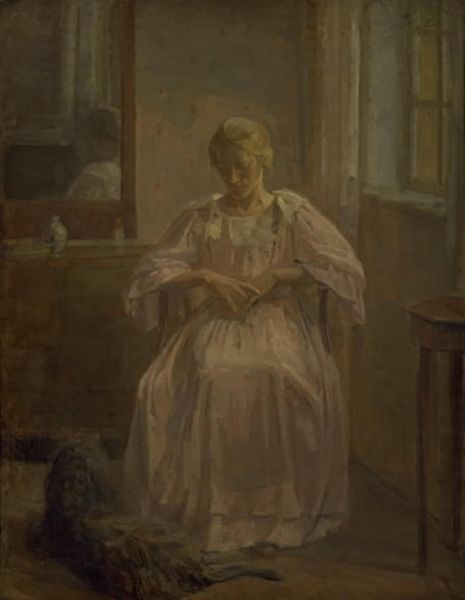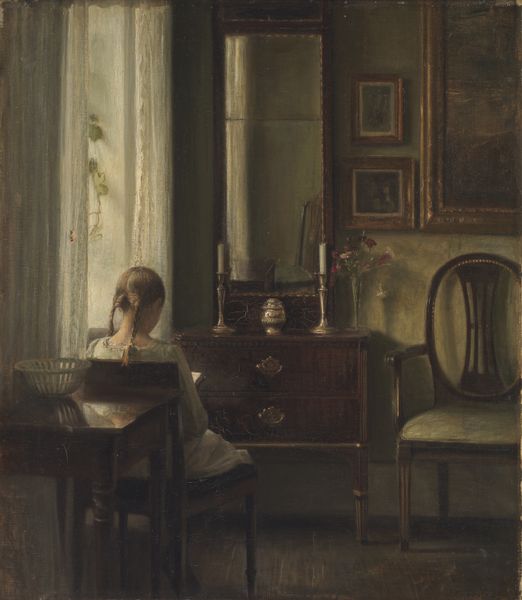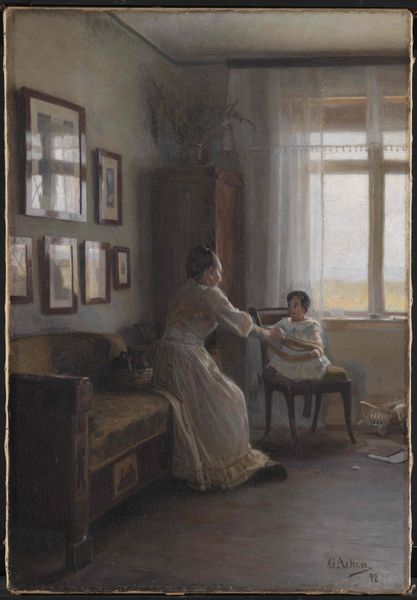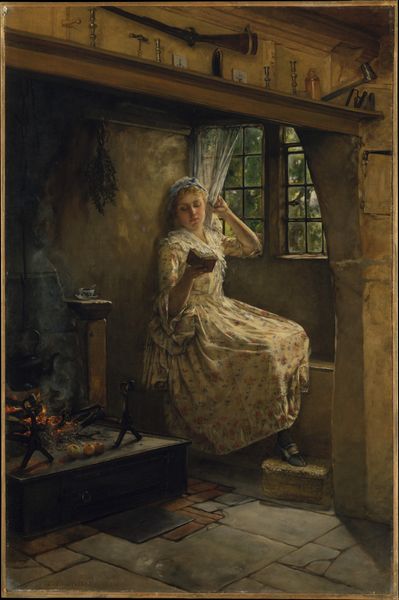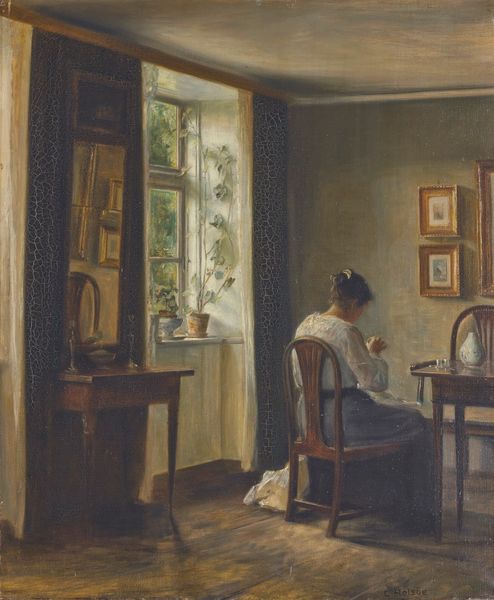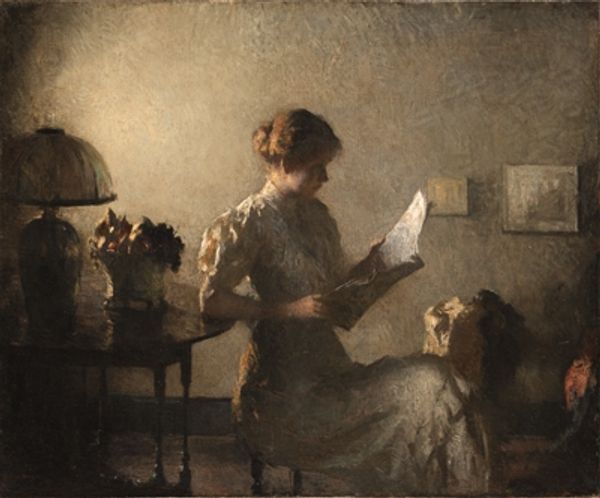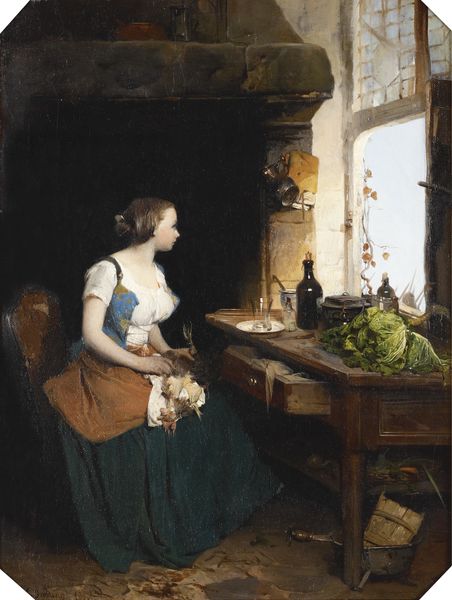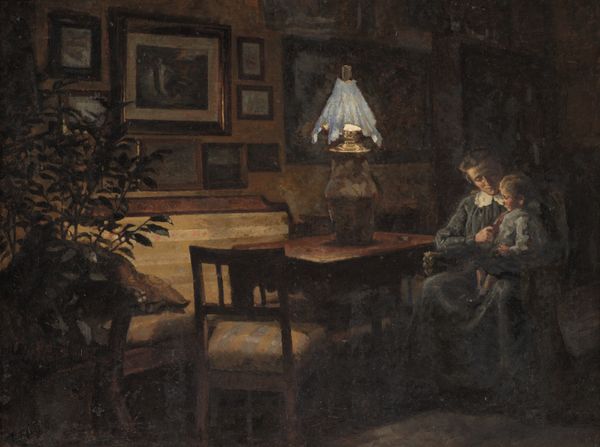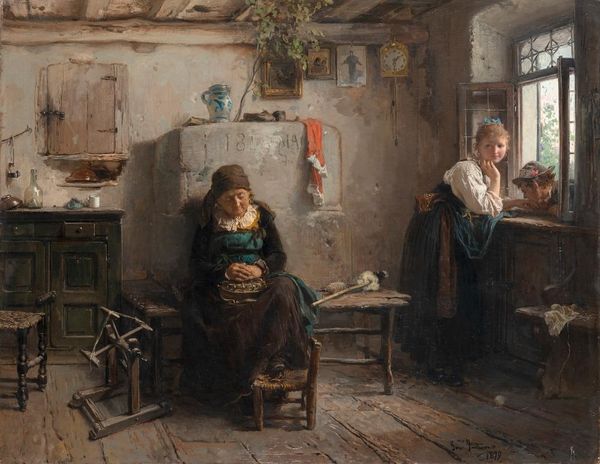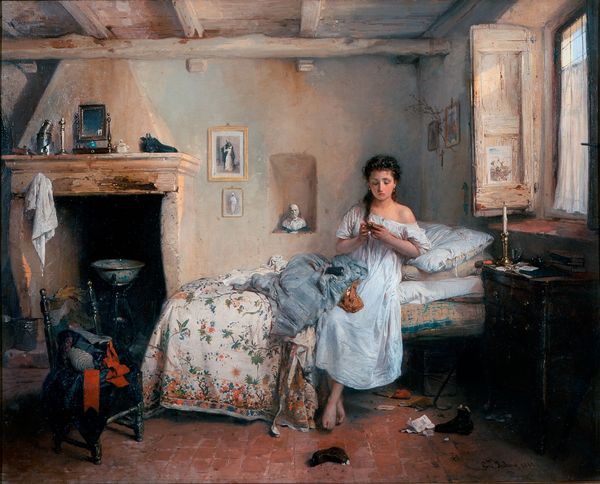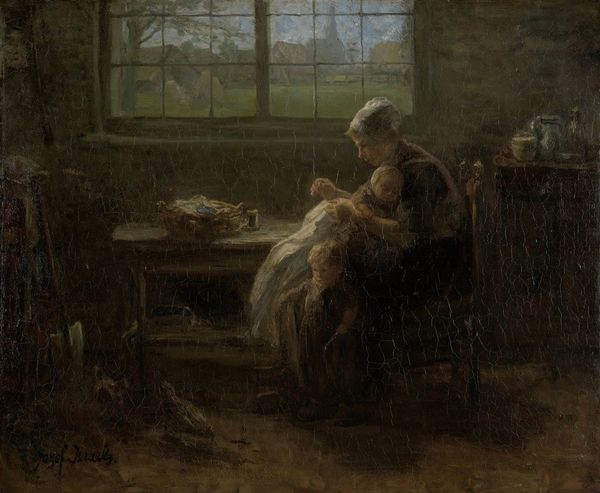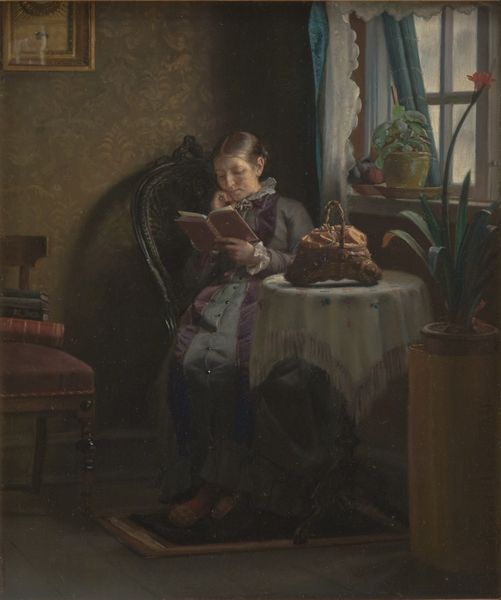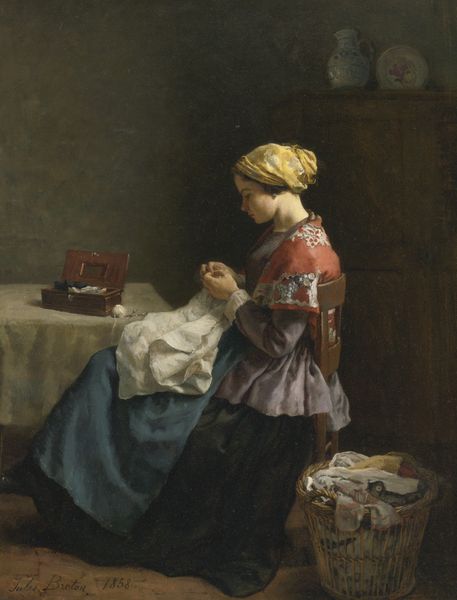
painting, oil-paint
#
portrait
#
16_19th-century
#
painting
#
oil-paint
#
genre-painting
#
academic-art
#
realism
Dimensions: overall: 63.5 × 73.03 cm (25 × 28 3/4 in.) framed: 82.07 × 94.62 × 9.53 cm (32 5/16 × 37 1/4 × 3 3/4 in.)
Copyright: National Gallery of Art: CC0 1.0
Curator: Eastman Johnson’s painting, “The Pets,” created in 1856, presents a rather melancholic scene. My initial impression is one of quiet observation, a contained narrative about this little girl surrounded by animals in an interior space bathed in diffused light. Editor: Yes, I’m immediately struck by the almost palpable stillness. The way the light catches on the girl's dress and the gleam in the fishbowl, set against the gloom, suggests a certain contained world—a network of gazes and enclosures. We have this little girl in a chair, looking outside the frame, we have a cat watching a goldfish, a parrot atop a cage… what to make of these nested surveillances? Curator: I read this through the lens of 19th-century constructions of childhood, the family and domestic space—the dynamics of confinement and freedom are clearly at play. Is the girl as much of a pet as the cat, the bird, or the goldfish? What does it mean to observe versus to be observed? I think this connects to Victorian ideologies about women as domesticated beings and childhood innocence… it’s interesting that the girl seems so lost in thought despite the lively menagerie around her. Editor: Indeed. Let's consider the formal aspects, though. The composition is very carefully orchestrated, a play of diagonals leading the eye across the space. Notice how Johnson employs light and shadow to create depth. He is very attentive to rendering texture; the way light glints off the various surfaces - the glass, the girl's dress, the floorboards… each reflects at different intensity and has specific hue; and it's interesting to notice that although it’s Realism, the artist still chooses to paint an overall muted, darker scene with lighter areas carefully placed and framed. This use of chiaroscuro surely conveys much of the work's mood. Curator: True, this technique underscores the psychological depth I see here—perhaps, even a critical perspective on childhood as a constricting construct. The girl's interior life seems far removed from her immediate environment. Editor: Looking closely, one begins to detect minor dissonances too, the slightly ragged edges in the application of the oil paints hint to the artist’s human gesture... something I suspect an early camera wouldn't have easily rendered. But I agree with your socio-political points. There’s a push-pull at play here that's fascinating. Curator: This artwork offers an intriguing glimpse into 19th-century perceptions of childhood and the unspoken dynamics within a home, and Johnson provides this quiet criticism. Editor: Precisely, the delicate formal balance, the composition, and the distribution of light all converge to evoke an enigmatic emotional resonance, prompting us to ask further questions and come up with further, complex answers.
Comments
No comments
Be the first to comment and join the conversation on the ultimate creative platform.
